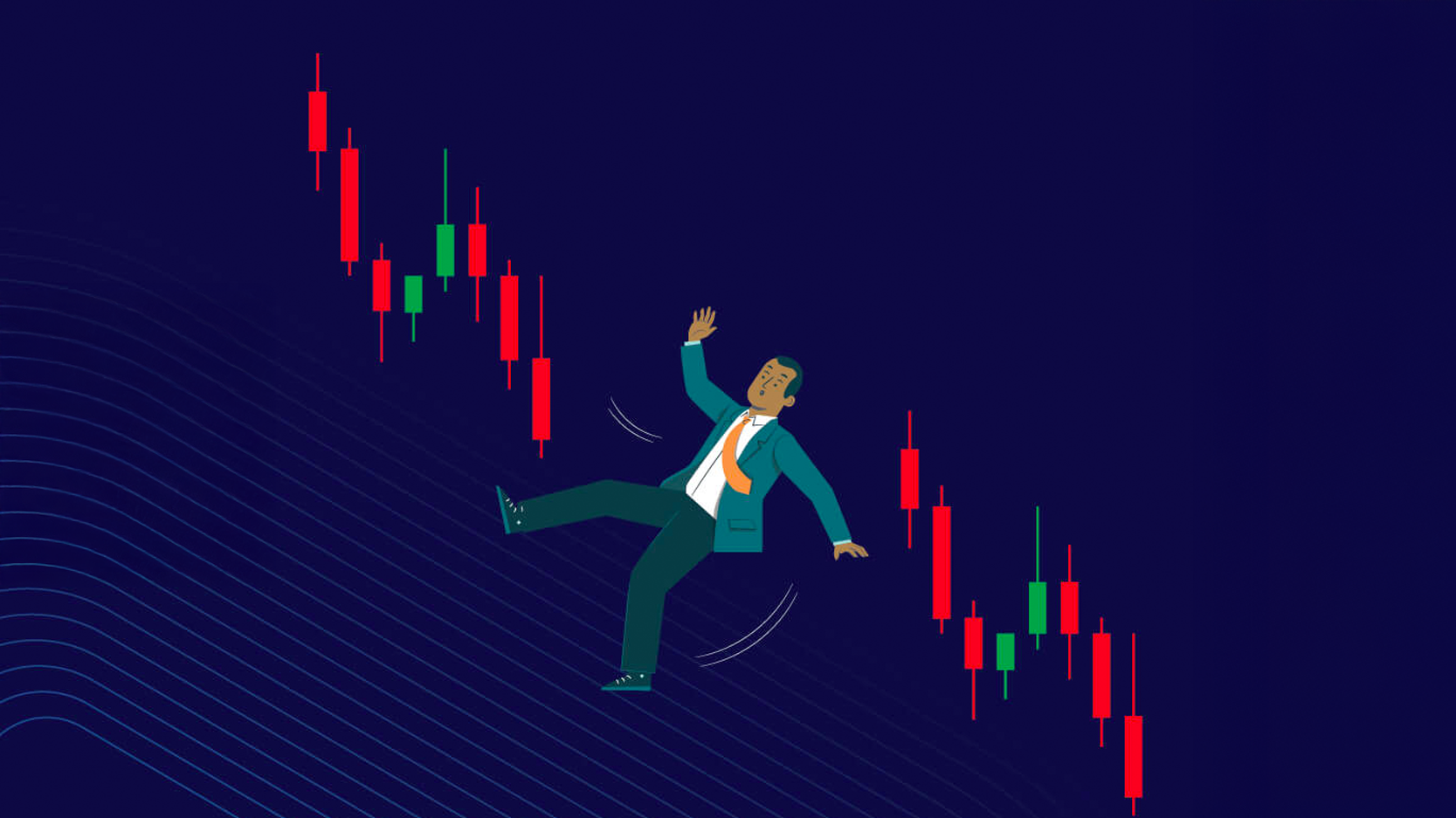Forex Slippage Explained: Causes & How to Minimize It
What Is Forex Slippage? 5 Ways to Avoid Trading Slippage, Broker Execution Speed Is the Key!
In the fast paced forex market, have you ever experienced a situation where your order was executed at a different price than the one you placed? That is what’s known as “forex slippage”, and it can quietly erode your profits or even turn a winning trade into a loss. Want to know what forex slippage is and how to avoid it? This article will explore the main causes of slippage and reveal the crucial role broker execution speed plays, while providing five practical strategies to help you effectively reduce slippage risk and protect your trading results.
What Exactly Is Forex Slippage?
Imagine you see an apple priced at 10 dollars in the market. When you decide to buy and take out your wallet, the seller tells you the price is now 11 dollars. That 1 dollar difference is the “slippage” in the trading world.
Definition of Slippage: The Gap Between Expected and Executed Price
In forex trading, slippage refers to the difference between the “expected price” at which a trader places an order and the “actual executed price” of that order. This difference occurs because of the short time lag between when you click the order button and when the broker’s server receives and executes your trade. Even within just a few milliseconds, market prices can change, especially in fast moving market conditions.
Positive Slippage vs. Negative Slippage: Is Slippage Always a Bad Thing?
Many traders panic at the mention of “slippage”, but it isn’t always a bad thing. Slippage can actually be divided into two types.
- 😮 Negative Slippage: This is the most common type and occurs when the actual execution price is worse than your expected price. For example, you expect to buy EUR/USD at 1.0800, but the order is executed at 1.0802. The extra 2 pips represent an increase in your trading cost.
- 🤩 Positive Slippage: This happens when the actual execution price is better than your expected price. For example, you expect to buy EUR/USD at 1.0800, but the trade is executed at 1.0798. That means you bought the asset at a lower price, earning an unexpected “bonus”.
Although positive slippage sounds great, traders should focus more on avoiding and managing negative slippage, as it directly affects trading risk and potential losses. A good broker should handle both positive and negative slippage fairly, rather than only allowing unfavorable slippage to occur.
Why Does Trading Slippage Occur? Three Main Causes and the Role of Broker Execution Speed
Understanding the causes of slippage is the first step in learning how to avoid it. Slippage is mainly influenced by three key factors, with the broker’s execution speed playing a critical role.
Cause 1: High Market Volatility and Low Liquidity
When the market experiences sharp volatility, the likelihood of slippage increases significantly. This typically occurs in the following situations.
- Major Economic Announcements: Events such as the US Nonfarm Payrolls (NFP) report or central bank interest rate decisions. At the moment of release, prices can move by dozens or even hundreds of pips within seconds, making it nearly impossible for your orders to execute precisely at the expected price.
- Liquidity Shortages: During market opening or closing hours, or around major holidays, there are fewer market participants and liquidity drops. In such cases, even a moderately sized order may struggle to find enough counterparties, forcing the price to move in an unfavorable direction before the trade can be executed.
Cause 2: Broker Execution Speed and Server Latency
This is the most critical technical factor affecting slippage. Your trading order must travel through a path: your computer → your network → the broker’s server → the liquidity provider. The longer this entire process takes (latency), the higher the risk of slippage. Broker execution speed depends on several key elements.
- Server Location: Top brokers place their trading servers in the same data centers as major liquidity providers (such as LD4 in London or NY4 in New York) to minimize physical distance and reduce latency.
- Order Processing Technology: An efficient order matching engine can process thousands of orders within a millisecond, ensuring your trades are executed instantly.
- Network Infrastructure: The broker’s bandwidth and network stability also determine how smoothly orders are transmitted.
If your broker lags behind technologically in these areas, slippage may occur even in calm market conditions simply because your orders are “waiting in line” to be processed.
Cause 3: Quality of Personal Internet Connection
Don’t forget, the issue may also lie on your end. If your internet connection is unstable or has high latency, such as when using weak Wi-Fi or mobile networks, your orders are already at a disadvantage from the start. Delays on your side give the market more time to move, increasing the likelihood of price differences by the time your orders reach the broker.
How to Effectively Avoid Trading Slippage? 5 Practical Strategies
While slippage cannot be completely eliminated, you can minimize its impact by applying the following five practical strategies. Paying closer attention when selecting your broker and order types can greatly improve the accuracy of your trade execution.
Strategy 1: Use “Limit Orders” to Control Execution Price Precisely
Order type is the most direct tool for managing slippage. The two most common order types are:
- Market Order: Executes immediately at the best available market price. The advantage is guaranteed execution, but the drawback is the lack of price control, making it highly susceptible to slippage during volatile market conditions.
- Limit Order: Executes only at a specified price or better. For example, placing a Buy Limit order means your trade will only execute at the set price or lower. The advantage is that it completely avoids negative slippage, but the downside is that if prices move quickly away from your level, your order may remain unfilled.
For traders seeking precise entry points or planning to place pending orders, using limit orders is the best choice to avoid slippage.
Strategy 2: Avoid Trading During Major News Releases or High Volatility Periods
Make it a habit to regularly check the economic calendar. In the minutes, or even up to half an hour, before and after major data releases or news events (such as central bank speeches), the market often becomes extremely volatile. Unless your strategy is specifically designed for such conditions, avoiding these periods is a wise move to protect yourself from severe slippage.
Strategy 3: Choose a High-Quality Broker with Fast Execution Speed
A reliable broker is your most important defense against slippage. As mentioned earlier, superior broker execution speed can significantly reduce latency. When choosing a trading platform, prioritize brokers that publicly disclose their execution speed data, host servers in major financial centers, and have strong reputations within the market.
Strategy 4: Ensure a Stable Internet Connection
To do a good job, you must first have the right tools. For short-term or scalping traders, network stability is critical. Whenever possible, use a wired Ethernet connection instead of Wi-Fi, and make sure your internet service provider offers a low-latency connection. You can use online tools to test your ping to the broker’s server, the lower the ping value, the smaller the delay.
Strategy 5: Split Large Orders to Avoid One-Time Bulk Trades
If you need to execute a large trade (for example, 50 lots), placing it all at once as a market order can easily consume available liquidity and cause significant slippage. A more prudent approach is to divide the large order into several smaller ones (for instance, 10 orders of 5 lots each) and enter the market gradually. This not only reduces market impact but also helps you achieve an average execution price closer to your intended level.
How to Evaluate a Broker’s Execution Speed and Slippage Control Capability?
Among the many forex platforms available, assessing a broker’s ability to manage slippage is not always easy. You can evaluate this from several perspectives to help you find a trustworthy trading partner.
Understand the Broker Type: ECN/STP vs. MM Model
A broker’s operating model directly affects how your orders are executed:
- ECN/STP (Electronic Communication Network/Straight Through Processing): These brokers transmit your orders anonymously to a liquidity pool composed of banks and institutions for direct matching and execution. The process is transparent and fast, generally offering more accurate market pricing and lower slippage risk.
- MM (Market Maker): Market makers usually act as the counterparty to your trades, creating their own price quotes. While modern market makers can still provide highly competitive pricing and fast execution, this model inherently carries a potential conflict of interest.
For traders who value execution quality, reputable ECN/STP brokers are typically the preferred choice.
Check Whether the Broker Offers Slippage Protection Policies
Some reputable brokers provide “slippage protection” or “negative slippage protection” policies. This means they commit that under certain conditions, your losses will not exceed your expected amount, or they will compensate you for abnormal slippage. Such policies reflect the broker’s confidence in its execution capability and serve as an additional layer of protection for clients.
Refer to Third-Party Reviews and Genuine User Feedback
Beyond official marketing claims, pay close attention to real user experiences. You can learn about specific brokers’ performance in slippage control and execution speed through professional financial media reviews, trading forums (such as Myfxbook and Forex Factory), or social media discussions. Authentic trading experiences often provide far more valuable insight than promotional statements.
Frequently Asked Questions (FAQ) About Forex Slippage
Q: Is trading slippage normal?
A: Yes, slippage is a normal phenomenon in financial markets, especially when trading with market orders or during periods of high volatility. It occurs not only in the forex market but also in stocks, futures, and any market that uses electronic order matching. A completely zero-slippage environment is virtually impossible; what matters is whether the frequency and magnitude of slippage remain within a reasonable range.
Q: Do market orders always cause slippage?
A: Not necessarily, but the likelihood is very high in volatile or low-liquidity markets. A market order instructs the system to “execute at the best available price”, so if prices move between the time you place the order and when it is executed, slippage occurs. In calm and highly liquid conditions, however, a market order may still be filled exactly at the clicked price.
Q: Which types of traders should be most cautious about slippage risk?
A: There are two main types. The first is scalpers, as their target profits are usually only a few pips, meaning even minor slippage can turn a profitable trade into a loss. The second is news traders, who enter positions during data releases when volatility is at its peak. These traders face the highest slippage risk and must have solid risk management strategies.
Q: Does using an EA (Expert Advisor) increase slippage?
A: The EA itself does not cause slippage, but its high-frequency trading nature can amplify its effects. Since an EA executes trades automatically based on predefined price parameters, if execution speed is insufficient, frequent slippage can severely impact its performance. Therefore, traders running EAs usually choose low-latency VPS (Virtual Private Servers) and brokers with ultra-fast execution speeds.
Conclusion
In summary, understanding what forex slippage is and learning how to avoid trading slippage are essential lessons for every trader. Although slippage is an inherent part of the market and cannot be completely eliminated, you can minimize its negative impact through smart strategies—such as using limit orders more often, avoiding high-risk periods, and most importantly, choosing a reputable broker with top-tier execution speed. By doing so, you can ensure your trading strategies are executed with greater precision. Start reviewing your trading habits and your broker today to move toward a more stable and controlled trading journey.
Related Articles
-
Which Exchange Is Best for Beginners? 2025 Beginner’s Guide and Exchange Recommendations Just stepped into the new world of cryptocurrency but already overwhelmed by the countless exchanges out there? When faced with the big question, “Which exchange is best for beginners?”, many people simply don’t know where to start. In...2025 年 11 月 17 日
-
Exchange Fund Transfer Procedure: Illustrated Guide to Deposits, Withdrawals, and Wallet Transfers New to the world of cryptocurrency but overwhelmed by the complicated fund operations? You often hear terms like “deposit”, “withdrawal”, and “fund transfer”, yet when it comes to actual operation, you worry that pressing the wrong button might...2025 年 11 月 17 日
-
Exchange API Application and Integration Tutorial: Understand API Trading Settings in One Article! Tired of watching the market all day and placing orders manually, only to miss the best entry and exit points? Want to implement 24/7 automated trading strategies through programming but don’t know where to start? This article...2025 年 11 月 17 日













